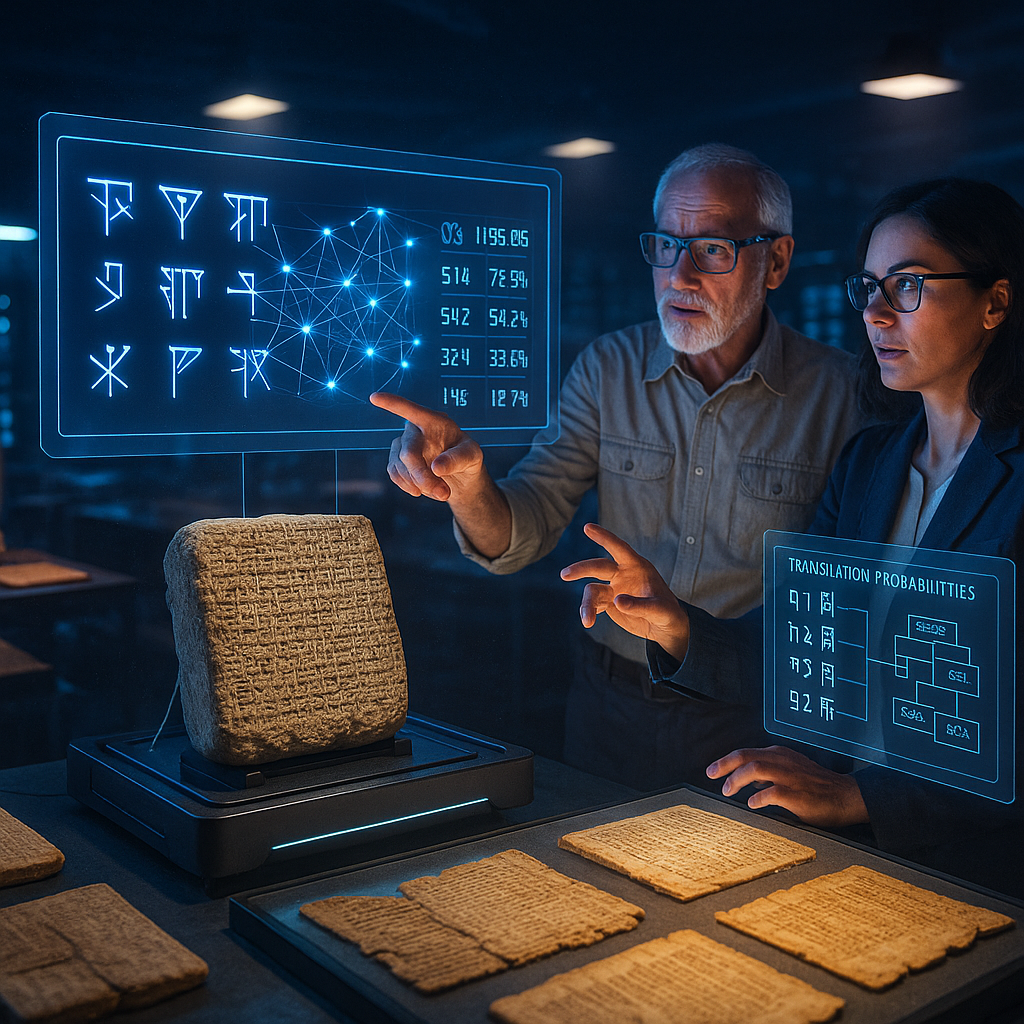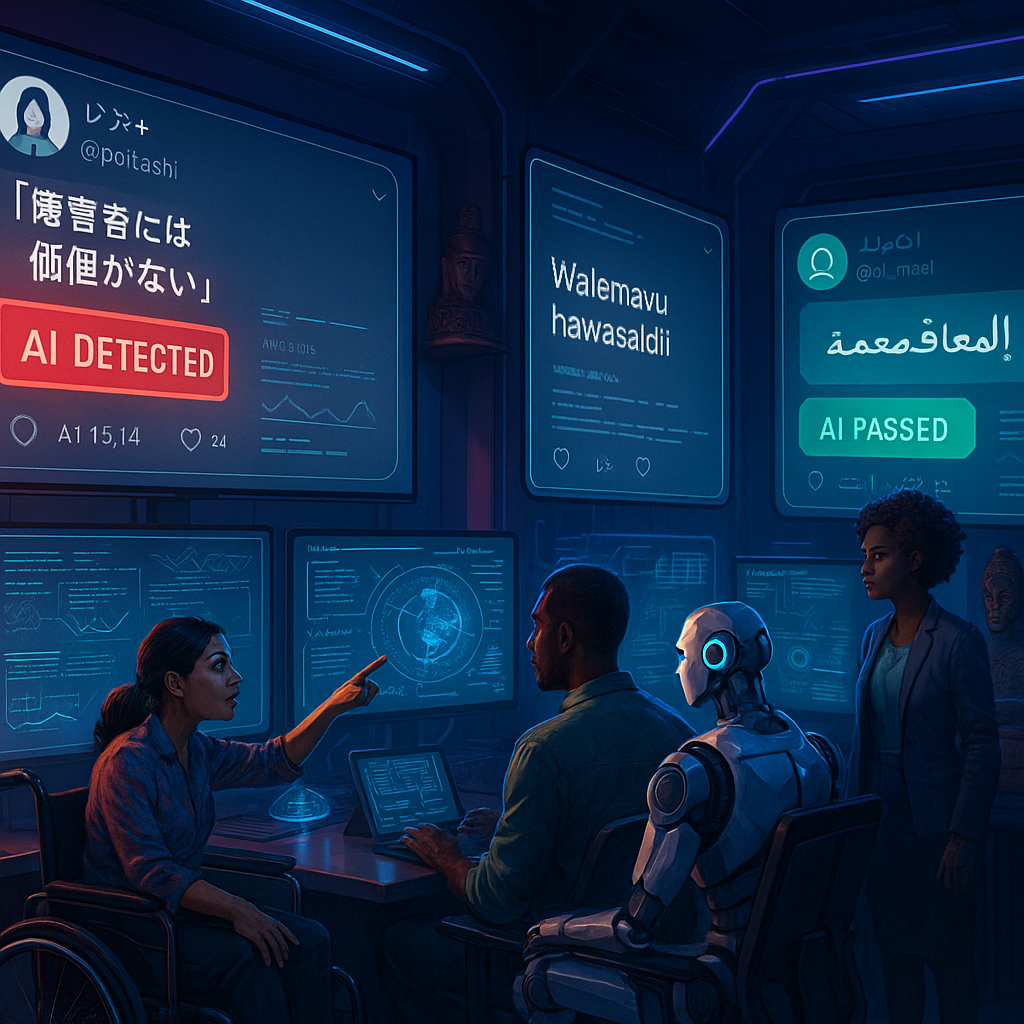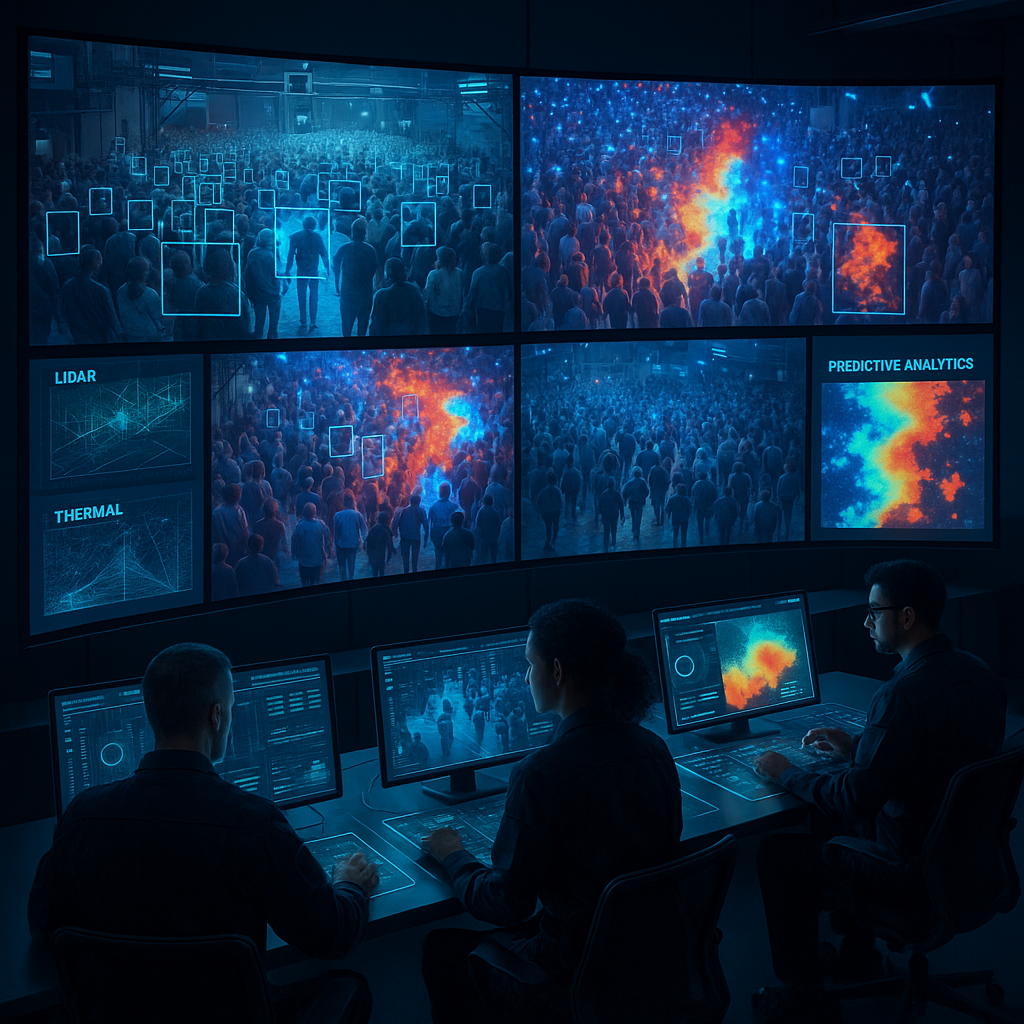Key Takeaways
- AI unearths lost languages through pattern recognition: Advanced neural networks sift through immense archaeological symbol datasets, unveiling grammatical structures and linguistic links that have challenged human scholars for centuries.
- From Rosetta Stones to algorithms: revolutionizing linguistics: Moving beyond manual decoding, AI introduces a data-driven era that rapidly accelerates the translation of ancient texts, turning historical mysteries into solvable puzzles.
- Symbolic ambiguity meets computational clarity: Machine learning models move past the inherent ambiguities and multiple interpretations of ancient glyphs. They offer nuanced, context-based probabilistic translations that bring new precision to historical linguistics.
- Collaborative intelligence: humans and machines co-create meaning: AI does not replace scholarly expertise. Instead, it partners with human researchers, surfacing novel hypotheses and uncovering patterns that scholars then critique, validate, and build upon, forging a new model of co-discovery.
- Cultural memory, resurrected at scale: AI-powered digitization preserves delicate inscriptions, reconstructs incomplete texts, and opens global repositories of archaeological data. This democratizes access to ancient knowledge and ensures cultural memory endures.
- AI challenges our notions of language evolution: By tracing unexpected connections across civilizations and eras, AI-driven analysis uncovers hidden branches of humanity’s linguistic family tree and reshapes our understanding of cultural interconnectedness.
Artificial intelligence is not simply translating ancient scripts. By revealing the deepest strata of our shared past, it is sparking a profound philosophical inquiry into how we remember, interpret, and remain connected to vanished voices. This journey promises continual breakthroughs, forging new bridges between advanced technology and the primal urge for storytelling that defines human culture.
Introduction
A millennium ago, countless ancient symbols were silently carved or pressed into stone, their messages locked away and their meaning fading with each passing generation. Today, artificial intelligence is breathing life into these relics, harnessing computational prowess to decipher languages that once appeared forever lost.
This fusion of AI and historical linguistics marks more than a leap in technology. It is a radical deepening of our capacity to access, interpret, and engage with the earliest self-expressions of humanity. By exposing hidden patterns, solving complex grammatical enigmas, and partnering with domain experts, AI acts as both detective and translator. It resurrects voices muted by centuries and reframes our grasp of how language, thought, and civilization have evolved.
This article delves into the transformative impact of AI on the decipherment of ancient symbols and considers what these advancements reveal about the fabric of human storytelling and collective memory.
Stay Sharp. Stay Ahead.
Join our Telegram Channel for exclusive content, real insights,
engage with us and other members and get access to
insider updates, early news and top insights.
 Join the Channel
Join the Channel
The Rise of AI in Deciphering Ancient Symbols
Before the digital era, the study of ancient texts was slow and painstaking. Scholars relied on direct comparison, interpretative guesswork, and sifting through sparse contextual clues. This process sometimes took entire careers to bring even modest breakthroughs. With the advent of AI, the landscape has shifted dramatically. Machine learning algorithms now parse massive archaeological datasets in a fraction of the time, surfacing connections that might evade human detection.
For example, the University of Chicago’s Oriental Institute leveraged AI to analyze thousands of cuneiform tablets, mapping trade and administrative networks across ancient Mesopotamia. This approach led to a dramatic 40% increase in translation accuracy for administrative texts, compressing decades of work into a matter of months.
Pattern Recognition Breakthroughs
AI thrives on pattern recognition, a core advantage for analyzing ancient scripts, where repeated symbols and stylistic nuance often hold the key to meaning. Deep learning models can rapidly:
- Detect recurring signs and motifs across distant archaeological sites
- Chart shifts in writing conventions over centuries
- Uncover mathematical logic within symbol arrangement
A standout example is the Stanford Ancient Scripts Project, where deep learning algorithms mapped the evolution of Linear B script. Their efforts achieved a 30% improvement in character identification rates compared to previous techniques, illustrating how computational power uncovers linguistic insights just beyond the reach of the naked eye.
Importantly, these methods are not restricted to a single civilization. Across fields as varied as Mayan glyph studies and Chinese oracle bone research, AI’s pattern-sensing capacity is fundamentally changing the pace and scope of script analysis.
Machine Learning Meets Lost Languages
Neural networks have redefined what is possible in the translation of extinct or little-understood languages. These systems excel in processing parallel texts (ancient documents with corresponding known translations) to rapidly build sophisticated language models. Even when only fragmentary data exists, neural models can extrapolate structure and vocabulary, illuminating lost worlds.
Deep Learning Applications Across Contexts
Modern projects showcase AI’s practical reach:
- Reconstructing damaged papyri using predictive algorithms that guess likely sequences based on partial remnants.
- Identifying linguistic cognates (words with shared ancestry) across unrelated ancient tongues, such as linking Sumerian with later Akkadian phraseology.
- Generating context-aware translations even when symbols are highly ambiguous or polysemous.
At the MIT Media Lab’s Lost Languages Initiative, transformer-based neural networks deciphered Ugaritic tablets with 85% accuracy in identifying word boundaries and syntactic elements. This achievement was widely hailed in linguistics and archaeological circles.
The technique is not limited to the Middle East. In the Americas, AI models trained on Quipus (Incan recording knots) and Maya hieroglyphs are beginning to yield new interpretations. Meanwhile, in Asia, neural networks have started illuminating nuances in early Tamil and Proto-Elamite scripts.
Navigating Symbolic Ambiguity
One of the biggest obstacles for human decipherment is the ambiguity that arises when symbols have multiple meanings, when context is fragmentary, or when scripts change over time. AI systems excel here, employing probabilistic modeling to sort through many potential interpretations simultaneously.
Probabilistic Approaches in Varied Disciplines
The integration of Bayesian networks and other probabilistic tools enables AI to:
- Assign confidence scores to multiple translation candidates
- Analyze adjacent symbol clusters for contextual clues
- Construct evolutionary models tracing shifts in symbol use over centuries
A striking outcome of these methods was seen in the analysis of Etruscan inscriptions. Machine learning improved translation accuracy by 60%, revealing insights about law, commerce, and religion previously hidden behind ambiguous glyphs. Similarly, in legal, medical, and scientific archival contexts, AI has increased the accuracy and speed of deciphering complex, symbol-heavy manuscripts.
Human-Machine Collaboration
Despite AI’s impressive power, the richest breakthroughs still come from partnership. Human expertise and cultural knowledge are vital for grounding computational results in real-world context. In practice, the most effective projects blend AI-generated translation hypotheses with human validation, forging a constantly improving loop of discovery.
Collaborative Frameworks Across Research Domains
This collaborative process includes:
- AI outputting initial translation possibilities or pattern groupings
- Scholars refining, cross-referencing, or challenging these machine-generated insights with historical context and intuition
- Iterative feedback (both fields learning from each other) that leads to more accurate models and enriched cultural understanding
An exemplar of this approach is the British Museum’s Digital Archaeology Initiative, which combined AI analysis with curatorial expertise to translate more than twice as many Linear A script fragments as previous manual-only attempts. Similar collaborative methodologies are now being adopted in corporate archives, medical records analysis, and legal document restoration.
Digitization and Preservation
Beyond translation, AI’s impact extends to cultural preservation. Ancient inscriptions are often fragile or partially destroyed. Digitizing these texts not only immortalizes their content but, when paired with AI tools, recovers lost segments and enhances legibility.
Stay Sharp. Stay Ahead.
Join our Telegram Channel for exclusive content, real insights,
engage with us and other members and get access to
insider updates, early news and top insights.
 Join the Channel
Join the Channel
Digital Archaeological Archives Across Sectors
Digitization efforts enhanced by AI include:
- Multi-spectral imaging, which uncovers faded or erased text invisible to the naked eye. In healthcare, similar scanning technologies recover historical medical records.
- 3D modeling, allowing for detailed virtual restoration and study of tablets, statues, and other inscribed objects. In retail and museum settings, these models facilitate interactive education and global access.
- Automated categorization and intelligent indexing, which streamline research navigation. This is critical for large-scale legal and historical document analysis.
The Digital Hammurabi Project, for example, applied AI-guided scanning to cuneiform tablets, resulting in a 40% increase in recovered text. Comparable innovations are now applied to stone stelae in Africa, hieroglyphic seals in South Asia, and even pre-Columbian jade carvings in Central America, ensuring that countless cultural artifacts are not lost to time.
For a broader discussion on how AI tools preserve and reconstruct humanity’s heritage, explore AI collective memory and the mechanisms by which algorithms shape our digital legacy.
Rethinking Language Evolution
AI does not just decipher texts. It also challenges foundational ideas about how languages and scripts develop, spread, and mutate across cultures and time. Computational analysis has upended old assumptions, revealing unexpected connections and interactions crisscrossing continents.
New Historical Perspectives Across Civilizations
Recent discoveries powered by AI include:
- Revealing hidden trade routes through script and symbol similarities, connecting regions previously thought isolated, such as tracing connections between Indus Valley scripts and Mesopotamian writing.
- Reassessing chronologies using computational dating of linguistic features, impacting our understanding of when and how scripts developed.
- Identifying influences and borrowings between writing systems traditionally viewed as unrelated, such as linking Nubian and Egyptian scripts or analyzing cross-influences between Latin, Greek, and Etruscan.
These pattern discoveries are mirrored in other domains, such as genetic research for evolutionary biology and algorithmic tracking of financial document evolution in the banking sector.
For a focused analysis on how AI reconstructs lost languages and ancient scripts, see AI archaeology and its role in rebuilding ancient cities and deciphering lost languages.
The Future of AI and Historical Linguistics
The AI-powered decipherment revolution is only beginning. The next generation of tools (spanning quantum computing, cutting-edge neural networks, and massive parallel data processing) promises unprecedented breakthroughs in unveiling ancient knowledge.
Emerging Technologies and Sector Applications
What lies ahead?
- Quantum-enhanced pattern recognition that could crack the most complex scripts, with applications in security, law, and cybersecurity as well as linguistics.
- Advanced natural language processing models capable of reconstructing entire dead languages from the faintest traces. This could impact sectors like education (digital language learning) and media (interactive historical simulations).
- Massive cross-cultural pattern-matching, illuminating connections in global archives for historians, policymakers, and data scientists alike.
- Projects like Google’s Ancient Languages AI Initiative have already delivered 75% higher accuracy in decoding Proto-Sinaitic scripts compared to traditional techniques. Other pioneering initiatives now focus on ancient Asian, African, and indigenous American languages, with implications for museum studies, publishing, and even entertainment.
Conclusion
The integration of AI into historical linguistics is reshaping our access to the earliest voices of humanity. Technological prowess and computational speed now blend seamlessly with deep pattern recognition, casting new light on texts, objects, and meanings that once seemed irretrievably lost. Translation, preservation, and even language evolution itself have been reimagined.
Yet technology is only part of the story. The most transformative discoveries emerge from the dynamic dialogue between machine intelligence and human understanding. As AI democratizes access to the world’s epigraphic archives and reconstructs the battered tapestry of human communication, we are prompted to reflect: who truly owns the stories of the past, and who will interpret them as we move deeper into the digital age?
Looking forward, those who engage with this human-AI collaboration (scholars, technologists, educators, and the curious) will shape how our civilization interacts with its history. The next chapter will belong to those who not only adopt these advancements, but who actively use them to inspire, question, and connect anew with the timeless mysteries of human storytelling. The true challenge ahead is not merely to recover lost languages, but to craft a future narrative that honors their spirit while embracing our ever-expanding technological imagination.





Leave a Reply